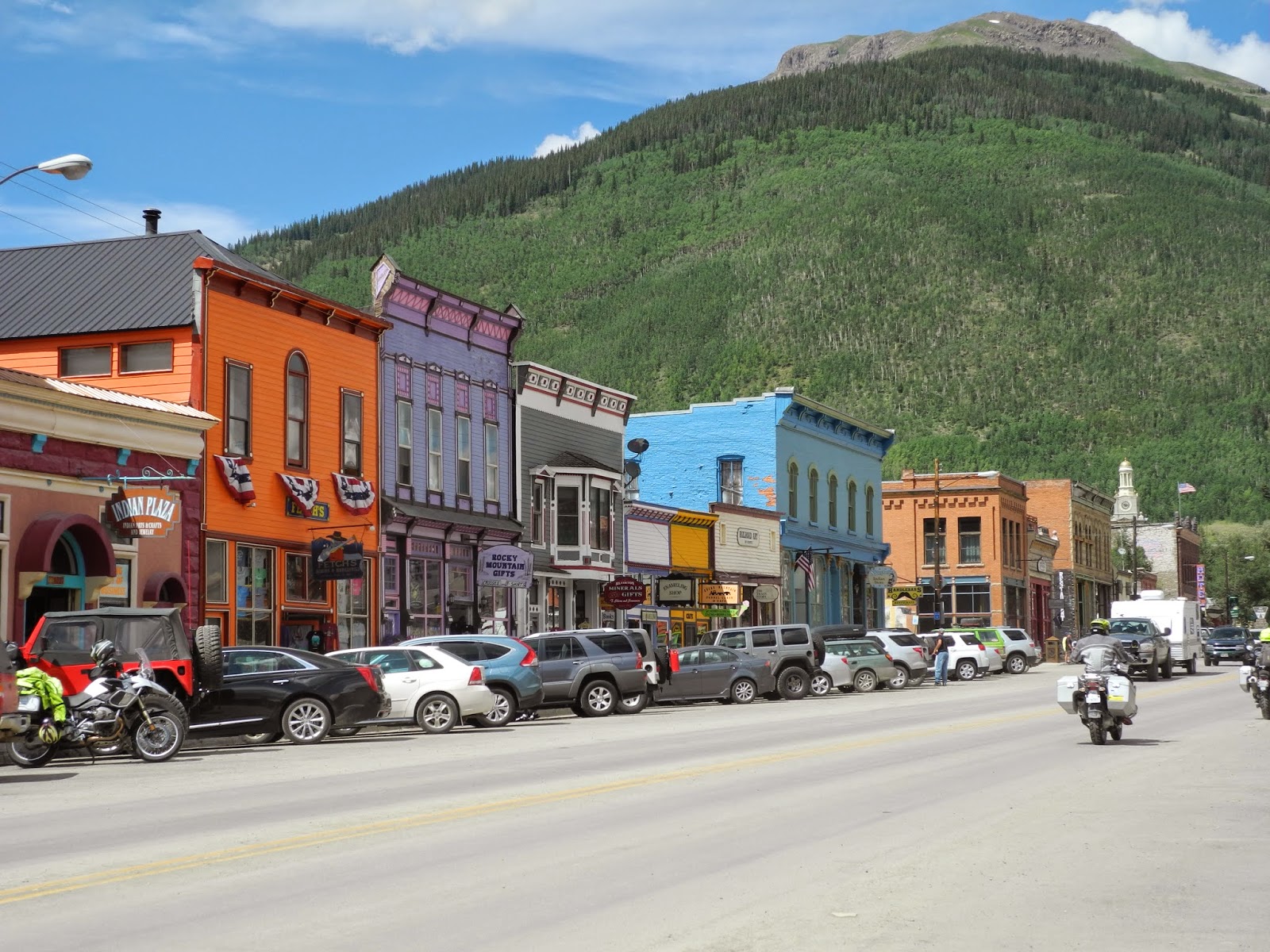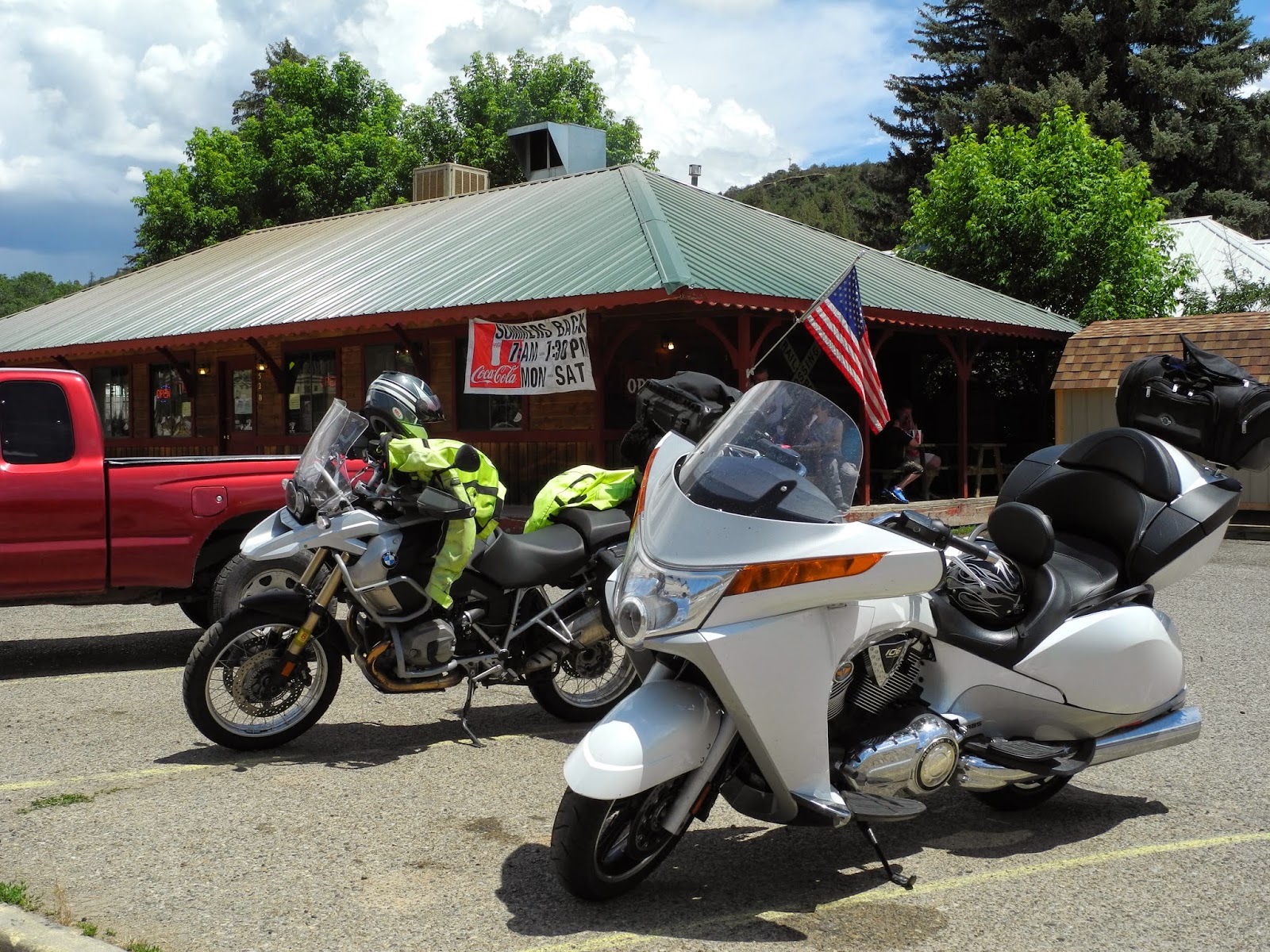In the last year that we've lived in Arizona, we've heard a lot about Crown King and the roads leading into this tiny town located high in the Bradshaw Mountains. The gold and silver rush of the 1870's led people to this part of Arizona, with the first claim of the Crown King mine in 1875. Soon after followed a post office, saloon, and a company store. Over $2 million in gold was mined from this area, and once the mines closed in the 1950's tourism took over as the primary source of revenue. Today Crown King is popular with people wanting to escape the brutal summer heat in Phoenix, and we saw more ATVs than cars.
We turned off I-17 at exit 248 toward Bumble Bee, originally a stagecoach stop on the road between Phoenix and Prescott, and now home to 19 people and 161 cattle. We saw a few of the cattle lounging in the shade under trees, and a couple right next to the road in this open range territory.
After 1.5 miles the pavement ended and a sign announced that we were now on a primitive road - as if we couldn't tell by the washboard effect that rattled my teeth, large rocks scattered across the road, and deep sandy spots in the low areas where water rushes through during rainstorms.
There was more pickup truck traffic than we expected on this twisting dirt road, but when we passed through Cleator about 14 miles into the ride, we understood why: the James Cleator General Store and Bar looked packed.
The dirt road follows the path of what was known as the Impossible Railroad that served the mines in the early 1900's. The road climbs, descends, and then climbs again through the high desert terrain.
As we got closer to Crown King, we entered a series of four, 180 degree switchbacks that look like the letter "Z" on the map. The combination of loose dirt, rocks, steep drop offs and tight turns on a narrow road caused us to slow down even more from our cruising speed of 25 mph.
The views were incredible, and Mike stopped a few times so I could take a picture. When we were moving, the ride was so bumpy and dusty taking photos was impossible.
26 miles and over an hour after we turned off I-70 we crested the final hill and turned into the pine forest that surrounds Crown King.
We were sweating in 100 degree temperatures during most of the ride, but at 5770' elevation and in the pines the temperature dropped to the mid-80's. We stopped at the General Store, which celebrated its 100th birthday in 2004, for a sandwich and a very welcome ice-cold bottle of water.
As we waited in line to pay for lunch, Mike was surprised to see Jeff from MotoGhost, the independent BMW motorcycle repair facility in Phoenix where Mike gets our bike serviced. We saw several ATVs and a few dirt bikes on the bumpy ride to Crown King, and Jeff was the only other motorcyclist braving this road today.
It's possible to reach Crown King via the Senator Highway, a toll road originally built between 1866 and 1867 linking Prescott to the mining camps in Crown King. We hoped to travel back home that way, but were told that recent monsoons washed out part of the road, which in the best of times is only passable by mountain bikes and ATV's, but not by motorcyclists riding two-up.
We retraced our route back down toward I-17, this time bypassing Bumble Bee and taking the cut-off toward Mayer. It was a jolt to ride off the dust and dirt and onto 4-lane pavement, switching from riding 25 to 75 mph.
We rode 150 total miles today in 4.5 hours through rough and beautiful terrain that while close to Phoenix and I-17, seems another world away. Our bike is a GS - Gelände-Strasse - which means off-road/street and is designed for this type of rough riding. There are many more rough dirt roads in Arizona waiting for us to travel them.






















































